Inspiring stories of strength, resilience, and hope from Ewing Sarcoma patients and families.
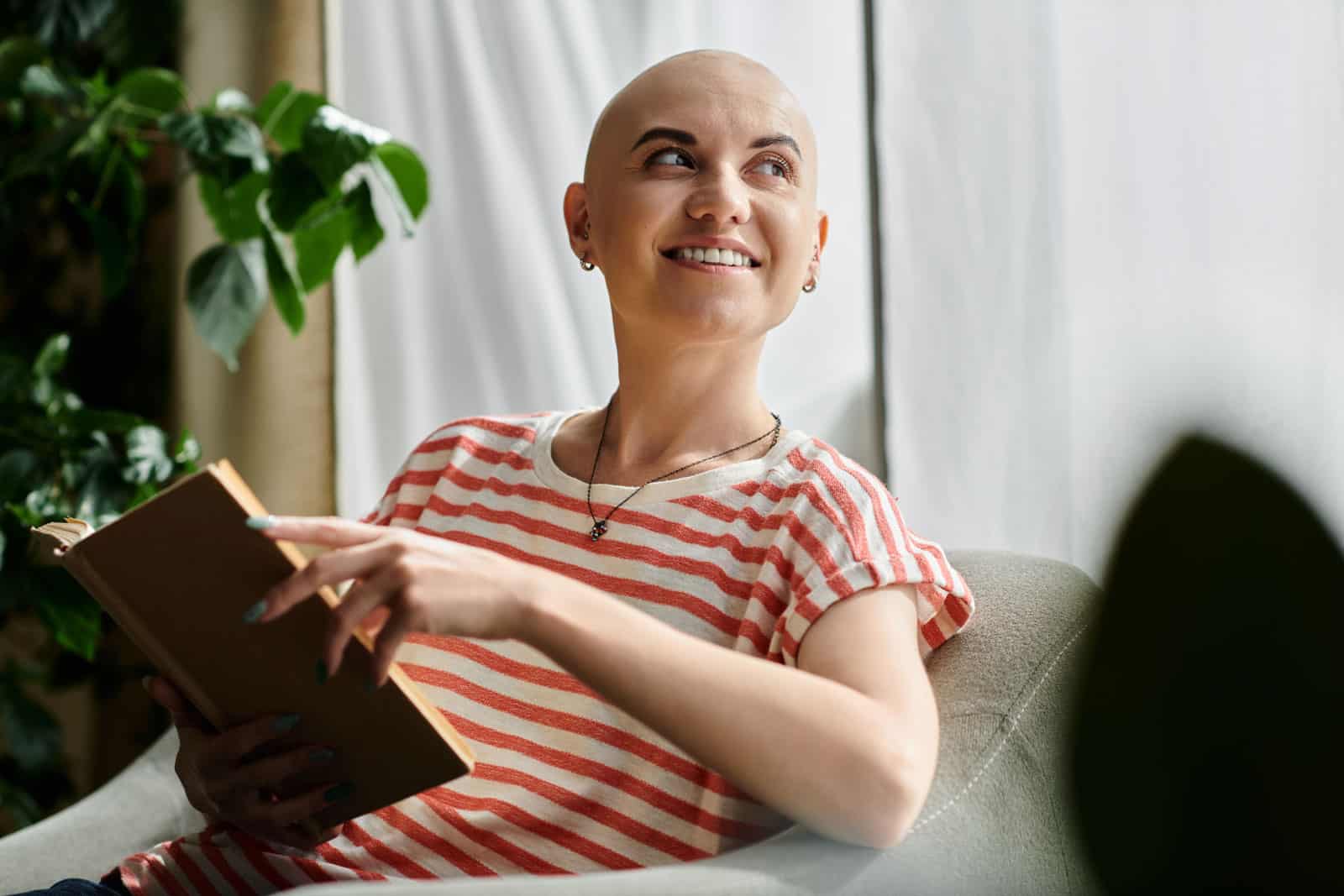
My doctors told me about the 1 Million 4 Anna Foundation when I was in high school. Carol and David Basso were the founders and they introduced me to many kids and adults who all shared one thing in common: Ewing sarcoma. It was a true blessing to be a part of this foundation and meet people who have been exactly where I have. Before that, I had never met anyone with Ewings. I felt like I finally had people who understood what I’ve been through and being able to share my experiences with someone who has had similar experiences was like a breath of fresh air. I will forever be grateful for being a part of this community.
”Do what you desire and do it now, because you never know when life will throw curveballs at you.”
I remember having side pain on my right side and fevers for multiple days. When we first went to see my doctor, they believed it to be a possible virus and sent me home. When I came back with the same symptoms a week later, they sent me to get a sonogram of my abdomen and it showed a tumor in my right kidney. We were then transferred to Children’s Medical Center Dallas the next day for the rest of my treatment.
After seeing the results of the sonogram, the doctors scheduled a right nephrectomy, which is a surgery to remove the kidney, the next day because the tumor was rapidly growing. Once the biopsy was sent off, it took my oncologists 13 days to figure out what type of cancer I had because it was uncommon at the time. They were convinced it was Wilms Tumor at first, which is a very common cancer of the kidney in children. My biopsy was sent to multiple different oncologists around the United States to help with the official diagnosis. I also had a bone marrow biopsy done to aid this process as well. After confirming it was Ewing Sarcoma PNET, I had a port placed and went through 1 year of chemo. My chemo regimen was called POG-9354, which included 16 rounds of Doxorubicin, Cyclophosphamide, VP-16, Ifosfamide, and Vincristine before I was in remission. From there, I had less and less appointments each year. These chemos have long term side effects that I still need to pay attention to even as an adult.
My parents and my sister were my biggest support system throughout my cancer experience. They never let me be alone for even a second while I was going through this journey. My parents both had to work as well, which as an adult now, I realize how difficult and exhausting it must have been to be taking care of a sick child while also needing to go to work at the same time. If they couldn’t be there, someone from my extended family would travel to Dallas to stay with me. My grandparents even flew all the way from India to help take care of us. My sister would come visit me in the hospital after school. She was always on my side and would make me feel like a normal kid again. She’s my partner in crime, from finishing my Ensures/Boost drinks for me when my parents weren’t looking (because I hated the taste of them and she knew it) to even now as adults. As a cancer patient’s sibling, I know it must not have been easy on her either. I am so thankful to have a family so supportive and loving as mine are.
The most challenging aspect of my journey is always having to be more cautious than everyone else around me. Since I only have one kidney now, I have to be mindful of everything that goes in or around my body. That means I’m making a mental pros and cons list for any food, drinks, supplements, medications, physical activities, sports, etc. that is going to affect my body. I remember this was challenging for me especially when I was in school because I was not able to partake in some activities with all the other kids and I also had to be careful of what I was eating. As a child, you want to fit in and be like everyone else so it was hard for me that I was different. However, I try to be more focused on the positive side of things than the negatives.
Having cancer is always going to be a part of you; your perspective on it will determine how it affects you. You can take what you went through, the good and the bad, and turn it into something beautiful. I never let myself think that having cancer was a negative thing that happened to me. It was meant to happen, because it changed my whole life and led me to where I am now. Currently, I work as an oncology nurse. I have worked with both kids and adults who are going through cancer. I even worked for a while at the same hospital that I did my surgery and chemotherapy at! Being an oncology nurse was my calling and I can’t imagine myself doing anything other than this. Having that experience on the other side of the bed helps me to take better care of my patients and see them from a different perspective. I know what they’ve been through, and I treat them exactly how my own nurses took care of me when I was getting treatment. My journey through cancer made me who I am today, and I’m very blessed and fortunate to be here and be able to make an impact on other people going through the same thing.
One piece of advice I have for someone who is newly diagnosed is that it’s okay to not be okay. A lot of times, we try so hard to be strong for our family and the people around us and we forget to take care of our own mental health. You are allowed to feel all the feelings, the sadness, the pain, the worry. Feel it, but also be sure to talk about it with someone else. Don’t feel like you have to hold everything in to protect everyone around you because it’s an overwhelmingly difficult thing to go through.

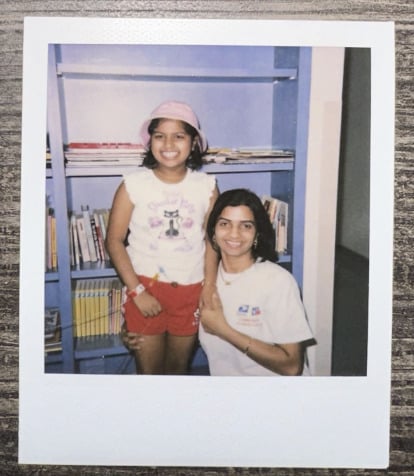
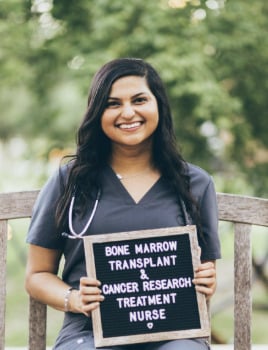


My doctors told me about the 1 Million 4 Anna foundation when I was in high school. Carol and David Basso were the founders and they introduced me to many kids and adults who all shared one thing in common: Ewing sarcoma. It was a true blessing to be a part of this foundation and meet people who have been exactly where I have. Before that, I had never met anyone with Ewings. I felt like I finally had people who understood what I’ve been through and being able to share my experiences with someone who has had similar experiences was like a breath of fresh air. I will forever be grateful for being a part of this community.
”Do what you desire and do it now, because you never know when life will throw curveballs at you.”
I remember having side pain on my right side and fevers for multiple days. When we first went to see my doctor, they believed it to be a possible virus and sent me home. When I came back with the same symptoms a week later, they sent me to get a sonogram of my abdomen and it showed a tumor in my right kidney. We were then transferred to Children’s Medical Center Dallas the next day for the rest of my treatment.
After seeing the results of the sonogram, the doctors scheduled a right nephrectomy, which is a surgery to remove the kidney, the next day because the tumor was rapidly growing. Once the biopsy was sent off, it took my oncologists 13 days to figure out what type of cancer I had because it was uncommon at the time. They were convinced it was Wilms Tumor at first, which is a very common cancer of the kidney in children. My biopsy was sent to multiple different oncologists around the United States to help with the official diagnosis. I also had a bone marrow biopsy done to aid this process as well. After confirming it was Ewing Sarcoma PNET, I had a port placed and went through 1 year of chemo. My chemo regimen was called POG-9354, which included 16 rounds of Doxorubicin, Cyclophosphamide, VP-16, Ifosfamide, and Vincristine before I was in remission. From there, I had less and less appointments each year. These chemos have long term side effects that I still need to pay attention to even as an adult.
My parents and my sister were my biggest support system throughout my cancer experience. They never let me be alone for even a second while I was going through this journey. My parents both had to work as well, which as an adult now, I realize how difficult and exhausting it must have been to be taking care of a sick child while also needing to go to work at the same time. If they couldn’t be there, someone from my extended family would travel to Dallas to stay with me. My grandparents even flew all the way from India to help take care of us. My sister would come visit me in the hospital after school. She was always on my side and would make me feel like a normal kid again. She’s my partner in crime, from finishing my Ensures/Boost drinks for me when my parents weren’t looking (because I hated the taste of them and she knew it) to even now as adults. As a cancer patient’s sibling, I know it must not have been easy on her either. I am so thankful to have a family so supportive and loving as mine are.
The most challenging aspect of my journey is always having to be more cautious than everyone else around me. Since I only have one kidney now, I have to be mindful of everything that goes in or around my body. That means I’m making a mental pros and cons list for any food, drinks, supplements, medications, physical activities, sports, etc. that is going to affect my body. I remember this was challenging for me especially when I was in school because I was not able to partake in some activities with all the other kids and I also had to be careful of what I was eating. As a child, you want to fit in and be like everyone else so it was hard for me that I was different. However, I try to be more focused on the positive side of things than the negatives.
Having cancer is always going to be a part of you; your perspective on it will determine how it affects you. You can take what you went through, the good and the bad, and turn it into something beautiful. I never let myself think that having cancer was a negative thing that happened to me. It was meant to happen, because it changed my whole life and led me to where I am now. Currently, I work as an oncology nurse. I have worked with both kids and adults who are going through cancer. I even worked for a while at the same hospital that I did my surgery and chemotherapy at! Being an oncology nurse was my calling and I can’t imagine myself doing anything other than this. Having that experience on the other side of the bed helps me to take better care of my patients and see them from a different perspective. I know what they’ve been through, and I treat them exactly how my own nurses took care of me when I was getting treatment. My journey through cancer made me who I am today, and I’m very blessed and fortunate to be here and be able to make an impact on other people going through the same thing.
One piece of advice I have for someone who is newly diagnosed is that it’s okay to not be okay. A lot of times, we try so hard to be strong for our family and the people around us and we forget to take care of our own mental health. You are allowed to feel all the feelings, the sadness, the pain, the worry. Feel it, but also be sure to talk about it with someone else. Don’t feel like you have to hold everything in to protect everyone around you because it’s an overwhelmingly difficult thing to go through.
After my surgery I had a hairline fracture at my hip that extended my time with no walking and making it a harder recovery process. Getting up with this new internal body part both felt weird and painful. One day I sat at the end of the bed at 8 years old saying “fight the pain” before I walked with support for the first time. This became my motto until this day. We wore T-shirts at my “ring the bell ceremony” with the words “Keep calm and fight the pain” on it and I have a banner of this phrase in my room. I also have bracelets of this motto that cancer patients wear today after I share my story with them.
My message to other cancer fighters is this: You probably are asking yourself “why me?” I repeated those words hundreds of times. Even though this may be hard to hear, you were chosen for a reason. This reason is not because you have been a bad person, in fact there is no explanation for it. You have been granted a gift that gives you a unique outlook on life. One that you will carry on for eternity no matter where the journey takes you.
I’ve often said that I’m thankful for having had cancer, even though that may sound shocking to those who haven’t been affected. But it gave me a perspective on life I would never have had otherwise. It’s a part of who I am now. Cancer taught me that life can change in an instant. It was, in my view, a lesson from God—one I hold dear and will carry with me for the rest of my life. And not only for myself, but for all the kids affected by cancer.
From the moment I survived, I became an advocate for cancer patients. This journey began right away, with foundations like 1 Million 4 Anna, led by Carol Basso, and countless other ways I found to give back. But the pivotal moment for me was when I was invited to speak as a guest at a Stryker event in New Jersey at just 13 years old. Stryker is the company that develops the metal implant that allows me to keep my leg and grow without multiple surgeries.
Before my surgery, amputation was the only option given to me. My family and I were determined to find another way, and we discovered the extendable implant and a surgeon in Houston who made the surgery possible. It felt like a miracle, an opportunity I couldn’t pass up.
At the Stryker event in New Jersey, I shared my story and showed the company how my journey had progressed. Between Stryker hearing my story and my Oncologist seeing my progress, my metal implant not only became an option, but it became a recommended option for kids in similar situations I was in. That moment marked the beginning of a much bigger mission. I realized that by advocating for kids like me, I could help change lives and bring hope to families going through the same battles I once did.
That’s just one example of how my life has transformed. In looking back, I’ve come to see that cancer, while painful and life-altering, opened doors I could never have imagined. It changed my perspective on life, pushing me to advocate for others and make a difference beyond my own experience. The lessons I’ve learned will stay with me forever. And my commitment to supporting kids affected by cancer will never fade.
We are all part of a vast community once we enter the world of cancer. It becomes something like a college alumni network, but on a much larger scale. We’ve got each other’s backs, and no one fights alone. This journey isn’t over for me, and I’m determined to continue using my voice to create opportunities, spread hope, and inspire families, one at a time.
The simple answer to this question is people. When faced with a challenge, it’s easy to want to shut others out. But what many don’t realize is that the support of those who have been through, or are going through, the same struggles is one of the most valuable things you can have.
For me, the connections I made with others were my greatest resource. One of the most significant examples is Carol and David Basso. I honestly wouldn’t be the person I am today without them. They showed me that, on the other side of my battle, I could emerge as someone who gives back—someone who has purpose and is important to others.
Carol and David are more than family to me, but my actual family also offered unwavering support. My parents were incredibly strong, sacrificing everything to make sure they could meet my needs and help us fight cancer together. My grandpa, “Pop,” shaved his hair alongside me and stood by my side every step of the way. And I could go on and on about the friends, family, and new people we met who supported me. All of them were my lifeline. They kept me afloat during the toughest moments.
Like most kids, I was active and competitive, with a special, unconditional love for soccer. If you ever saw me walking around the house, you’d always find a soccer ball at my feet. I couldn’t go a moment without thinking about the game—practicing, playing, or even collecting cards. It was my world. So, when I was told I couldn’t play anymore, I was shocked. But if there’s one thing about me you should know, it’s that I don’t accept limitations, and I never quit.
I was given two non-contact sports to choose from: golf or swimming. I chose swimming. At first, it was tough and I lacked lower body strength. I eventually made my way to six-day-a-week practices, and over time, I improved.
At my first meet, I won my first-ever freestyle race. From that moment on, I went undefeated in freestyle for an entire year. I fell in love with this new sport, and for the first time since being diagnosed with cancer, I felt like I was just another kid, no different from anyone else.
Fast forward to high school, where I represented my school at the TAPPS State Championships all four years in both individuals and relays. My best stroke became backstroke, partly because while my teammates worked on breaststroke, I focused extra time on perfecting my backstroke. I consistently placed high in state competitions. The moment of stepping up on the blocks competing at the highest level of the sport at the biggest meet in Texas is something I will hold on to forever. But here’s the thing: this isn’t my biggest achievement.
While everything I’ve accomplished in swimming is special, the true victory is the reason behind it. I didn’t do this for myself alone; I did it for the other kids fighting for their lives. I wanted to show them that anything is possible—that they can achieve greatness, just like anyone else. I proved that I could compete and succeed without anyone knowing the struggles I had been through. The real achievement is inspiring kids with cancer, helping them believe that they can beat this disease and come out stronger.
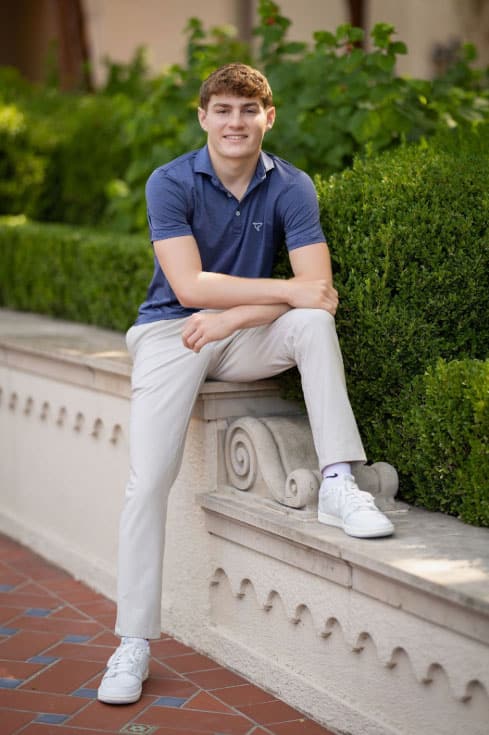
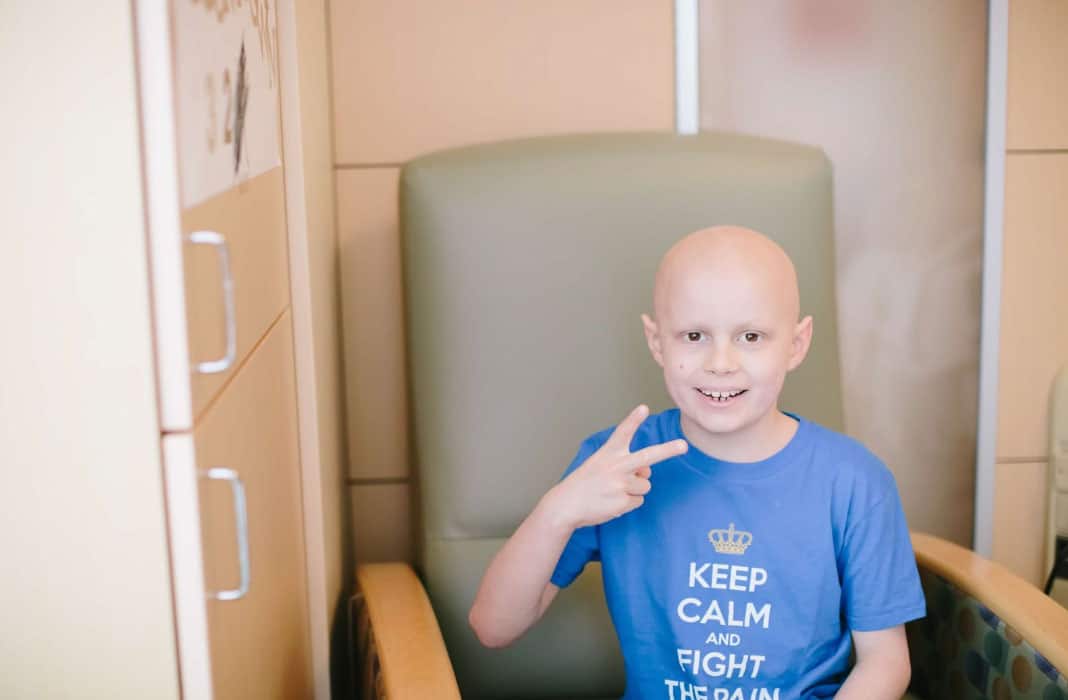

After my surgery I had a hairline fracture at my hip that extended my time with no walking and making it a harder recovery process. Getting up with this new internal body part both felt weird and painful. One day I sat at the end of the bed at 8 years old saying “fight the pain” before I walked with support for the first time. This became my motto until this day. We wore T-shirts at my “ring the bell ceremony” with the words “Keep calm and fight the pain” on it and I have a banner of this phrase in my room. I also have bracelets of this motto that cancer patients wear today after I share my story with them.
My message to other cancer fighters is this: You probably are asking yourself “why me?” I repeated those words hundreds of times. Even though this may be hard to hear, you were chosen for a reason. This reason is not because you have been a bad person, in fact there is no explanation for it. You have been granted a gift that gives you a unique outlook on life. One that you will carry on for eternity no matter where the journey takes you.
I’ve often said that I’m thankful for having had cancer, even though that may sound shocking to those who haven’t been affected. But it gave me a perspective on life I would never have had otherwise. It’s a part of who I am now. Cancer taught me that life can change in an instant. It was, in my view, a lesson from God—one I hold dear and will carry with me for the rest of my life. And not only for myself, but for all the kids affected by cancer.
From the moment I survived, I became an advocate for cancer patients. This journey began right away, with foundations like 1 Million 4 Anna, led by Carol Basso, and countless other ways I found to give back. But the pivotal moment for me was when I was invited to speak as a guest at a Stryker event in New Jersey at just 13 years old. Stryker is the company that develops the metal implant that allows me to keep my leg and grow without multiple surgeries.
Before my surgery, amputation was the only option given to me. My family and I were determined to find another way, and we discovered the extendable implant and a surgeon in Houston who made the surgery possible. It felt like a miracle, an opportunity I couldn’t pass up.
At the Stryker event in New Jersey, I shared my story and showed the company how my journey had progressed. Between Stryker hearing my story and my Oncologist seeing my progress, my metal implant not only became an option, but it became a recommended option for kids in similar situations I was in. That moment marked the beginning of a much bigger mission. I realized that by advocating for kids like me, I could help change lives and bring hope to families going through the same battles I once did.
That’s just one example of how my life has transformed. In looking back, I’ve come to see that cancer, while painful and life-altering, opened doors I could never have imagined. It changed my perspective on life, pushing me to advocate for others and make a difference beyond my own experience. The lessons I’ve learned will stay with me forever. And my commitment to supporting kids affected by cancer will never fade.
We are all part of a vast community once we enter the world of cancer. It becomes something like a college alumni network, but on a much larger scale. We’ve got each other’s backs, and no one fights alone. This journey isn’t over for me, and I’m determined to continue using my voice to create opportunities, spread hope, and inspire families, one at a time.
The simple answer to this question is people. When faced with a challenge, it’s easy to want to shut others out. But what many don’t realize is that the support of those who have been through, or are going through, the same struggles is one of the most valuable things you can have.
For me, the connections I made with others were my greatest resource. One of the most significant examples is Carol and David Basso. I honestly wouldn’t be the person I am today without them. They showed me that, on the other side of my battle, I could emerge as someone who gives back—someone who has purpose and is important to others.
Carol and David are more than family to me, but my actual family also offered unwavering support. My parents were incredibly strong, sacrificing everything to make sure they could meet my needs and help us fight cancer together. My grandpa, “Pop,” shaved his hair alongside me and stood by my side every step of the way. And I could go on and on about the friends, family, and new people we met who supported me. All of them were my lifeline. They kept me afloat during the toughest moments.
Like most kids, I was active and competitive, with a special, unconditional love for soccer. If you ever saw me walking around the house, you’d always find a soccer ball at my feet. I couldn’t go a moment without thinking about the game—practicing, playing, or even collecting cards. It was my world. So, when I was told I couldn’t play anymore, I was shocked. But if there’s one thing about me you should know, it’s that I don’t accept limitations, and I never quit.
I was given two non-contact sports to choose from: golf or swimming. I chose swimming. At first, it was tough and I lacked lower body strength. I eventually made my way to six-day-a-week practices, and over time, I improved.
At my first meet, I won my first-ever freestyle race. From that moment on, I went undefeated in freestyle for an entire year. I fell in love with this new sport, and for the first time since being diagnosed with cancer, I felt like I was just another kid, no different from anyone else.
Fast forward to high school, where I represented my school at the TAPPS State Championships all four years in both individuals and relays. My best stroke became backstroke, partly because while my teammates worked on breaststroke, I focused extra time on perfecting my backstroke. I consistently placed high in state competitions. The moment of stepping up on the blocks competing at the highest level of the sport at the biggest meet in Texas is something I will hold on to forever. But here’s the thing: this isn’t my biggest achievement.
While everything I’ve accomplished in swimming is special, the true victory is the reason behind it. I didn’t do this for myself alone; I did it for the other kids fighting for their lives. I wanted to show them that anything is possible—that they can achieve greatness, just like anyone else. I proved that I could compete and succeed without anyone knowing the struggles I had been through. The real achievement is inspiring kids with cancer, helping them believe that they can beat this disease and come out stronger.
I don’t know if I would call this my proudest achievement but something I am incredibly grateful to be able to do. I am so grateful that I get to raise my daughters and watch them grow alongside my husband. The life I have now is so beautiful. If you would’ve told me that this is where I would be after cancer, I wouldn’t believe you. I love that we get to live a simple life now. Cancer was a whirlwind. I have such peace being able to live the simple life with my family. I couldn’t ask for anything better.
Its reminded me how temporary hardships are. We often go through things in life that seem to feel like the end of the world. Cancer being one of them and forget that we are capable of going through hard things. I’m not saying that it shouldn’t feel like the end of the world or that I’m grateful to have gone through a season of battling cancer, but I can say that it’s allowed me to face other hardships in my life with more grace and patience knowing that I’m going to come out on the other side okay again. It’s shown me just how important each day is and how important each person is in my life, from my family to my friends and those that supported me from across the country. Those are truly some of the most important people to have next to you while battling cancer because they are going through it alongside you.
I have an almost 2-year-old daughter and I’m currently pregnant with our second daughter due this summer. I can only imagine how my perspective on life after cancer will continue to change as I watch them grow. Life after cancer is constantly reminding me and also humbling me along the way that my time with my girls and my husband is temporary but so impactful. Spending time and pouring into those you love and care about is truly one of most important lessons I learned after cancer. I’m so grateful that I have the opportunity to be with my husband because my husband went through cancer next to me the whole time. We will be able to tell our girls about it one day when they are older and it will be a opportunity to show them that you can overcome hard things and that they are temporary.
The biggest thing is that the battle isn’t over just because treatment is over. Chemotherapy is an awful drug. Don’t get me wrong, yes it eradicates cancer, but it also kills and damages everything in its path. I used to joke that the cancer wasn’t going to be what killed me, but the chemotherapy was. You also mentally have to heal all that you just had to endure for years. Once treatment is over your body still has to physically heal. I remember it took nearly a full year just for my counts to finally even back out to normal after all my treatment.
Once treatment is over, you’re still doing follow up scans that don’t really get any easier with time. It’s just living 3 months at a time until your next scan. Then it slowly becomes 6 months at a time until it becomes a yearly check in with your oncology team. I will have to receive an echo and bone scan every 2 years for the rest of my life due to the chemotherapy drugs. I’m grateful that the cancer hasn’t left any permanent damage to my body or organs but it’s unsettling knowing that I will have to continue to have follow ups because chemotherapy can be incredibly damaging.
After treatment, life doesn’t just go back to normal. It honestly feels like you’re living in a different body for a while having to relearn things about yourself. Treatment left me with fertility issues. I went into menopause for 2 years post treatment. I finally started seeing doctors about it because my husband and I wanted to have a family of our own one day. I was told by 5 different doctors, I wasn’t going to be able to get pregnant. Hearing that at 23 at the time, was another hardship for me and my husband. It wasn’t something that we expected to happen after all the precautions I took during chemotherapy to make sure that having kids one day could still be an option. The doctors were right that based on all my labs, I was in menopause with premature ovarian failure (POF), and that getting pregnant naturally shouldn’t happen for us, but it did! Twice. Our oncology team calls my daughter and daughter on the way miracle babies. All this to say, it’s still possible and don’t give up just because someone says you can’t.
As an amputee I also have to get a prosthetic made and fitted to my limb about every 2 years and a new knee about every 5 years. That takes so much time and attention to detail to get right. It takes about 4-6 months from start to finish for me every time I need to get refitted. That includes adjustments, fixing broken prosthetic feet (I would know, I’ve broken several already), charger replacements, castings, moldings, an even something as simple as a slight knee rotation. It’s definitely still been a learning curve with me with having a prosthetic. I hope soon I will feel that I have a routine down with it but I am still learning each day an each time I meet up with my prosthetist.



I don’t know if I would call this my proudest achievement but something I am incredibly grateful to be able to do. I am so grateful that I get to raise my daughters and watch them grow alongside my husband. The life I have now is so beautiful. If you would’ve told me that this is where I would be after cancer, I wouldn’t believe you. I love that we get to live a simple life now. Cancer was a whirlwind. I have such peace being able to live the simple life with my family. I couldn’t ask for anything better.
Its reminded me how temporary hardships are. We often go through things in life that seem to feel like the end of the world. Cancer being one of them and forget that we are capable of going through hard things. I’m not saying that it shouldn’t feel like the end of the world or that I’m grateful to have gone through a season of battling cancer, but I can say that it’s allowed me to face other hardships in my life with more grace and patience knowing that I’m going to come out on the other side okay again. It’s shown me just how important each day is and how important each person is in my life, from my family to my friends and those that supported me from across the country. Those are truly some of the most important people to have next to you while battling cancer because they are going through it alongside you.
I have an almost 2-year-old daughter and I’m currently pregnant with our second daughter due this summer. I can only imagine how my perspective on life after cancer will continue to change as I watch them grow. Life after cancer is constantly reminding me and also humbling me along the way that my time with my girls and my husband is temporary but so impactful. Spending time and pouring into those you love and care about is truly one of most important lessons I learned after cancer. I’m so grateful that I have the opportunity to be with my husband because my husband went through cancer next to me the whole time. We will be able to tell our girls about it one day when they are older and it will be a opportunity to show them that you can overcome hard things and that they are temporary.
The biggest thing is that the battle isn’t over just because treatment is over. Chemotherapy is an awful drug. Don’t get me wrong, yes it eradicates cancer, but it also kills and damages everything in its path. I used to joke that the cancer wasn’t going to be what killed me, but the chemotherapy was. You also mentally have to heal all that you just had to endure for years. Once treatment is over your body still has to physically heal. I remember it took nearly a full year just for my counts to finally even back out to normal after all my treatment.
Once treatment is over, you’re still doing follow up scans that don’t really get any easier with time. It’s just living 3 months at a time until your next scan. Then it slowly becomes 6 months at a time until it becomes a yearly check in with your oncology team. I will have to receive an echo and bone scan every 2 years for the rest of my life due to the chemotherapy drugs. I’m grateful that the cancer hasn’t left any permanent damage to my body or organs but it’s unsettling knowing that I will have to continue to have follow ups because chemotherapy can be incredibly damaging.
After treatment, life doesn’t just go back to normal. It honestly feels like you’re living in a different body for a while having to relearn things about yourself. Treatment left me with fertility issues. I went into menopause for 2 years post treatment. I finally started seeing doctors about it because my husband and I wanted to have a family of our own one day. I was told by 5 different doctors, I wasn’t going to be able to get pregnant. Hearing that at 23 at the time, was another hardship for me and my husband. It wasn’t something that we expected to happen after all the precautions I took during chemotherapy to make sure that having kids one day could still be an option. The doctors were right that based on all my labs, I was in menopause with premature ovarian failure (POF), and that getting pregnant naturally shouldn’t happen for us, but it did! Twice. Our oncology team calls my daughter and daughter on the way miracle babies. All this to say, it’s still possible and don’t give up just because someone says you can’t.
As an amputee I also have to get a prosthetic made and fitted to my limb about every 2 years and a new knee about every 5 years. That takes so much time and attention to detail to get right. It takes about 4-6 months from start to finish for me every time I need to get refitted. That includes adjustments, fixing broken prosthetic feet (I would know, I’ve broken several already), charger replacements, castings, moldings, an even something as simple as a slight knee rotation. It’s definitely still been a learning curve with me with having a prosthetic. I hope soon I will feel that I have a routine down with it but I am still learning each day an each time I meet up with my prosthetist.
Ava, age 13, was in 7th grade and a competitive cheerleader when a nagging leg injury put her on the sidelines in November 2020. Several doctor visits and multiple scans later, Ava was scheduled for a bone biopsy in January 2021.
The result was a diagnosis of Ewing’s Sarcoma localized in her femur. After 6 rounds of chemo, she had surgery to remove 6” of her femur in May 2021 and replace it with a cadaver bone, followed by an additional 8 rounds of chemotherapy. In May 2022, Ava had to have a total hip replacement.
267 days after her diagnosis Ava officially rang the bell with her doctors and nurses by her side when her end of treatment scans came back clear. Ava is now a junior in high school, has been engaged in several cancer-related causes and plans to study Studio Art in college.
My parents, grandparents, aunts, uncles, cousins and close family friends.
Not getting to do all the things I thought I was going to be able to do because of physical limitations. And I was out of school for an entire year, so that was really hard.
Knowing that my family and friends were by my side.
Be kind to your nurses!
I was very active before my diagnosis and was usually at the cheer gym 15 hours a week or more. During treatment and after my surgeries, I wasn’t able to be very active. My parents signed me up for voice lessons and I began drawing and painting a lot. When I returned to school, I joined choir and took art classes. I used art as an outlet to express my feelings, and plan to major in Studio Art when I go to college.
Since I was in treatment in 2021, I didn’t get to meet many other kids with cancer. After I was out of treatment I went to Camp iHope – a camp for children with cancer and their siblings. At camp, I was able to make friends that had also experienced cancer.
You can’t change the past, so look toward the future.
Ava, age 13, was in 7th grade and a competitive cheerleader when a nagging leg injury put her on the sidelines in November 2020. Several doctor visits and multiple scans later, Ava was scheduled for a bone biopsy in January 2021.
The result was a diagnosis of Ewing’s Sarcoma localized in her femur. After 6 rounds of chemo, she had surgery to remove 6” of her femur in May 2021 and replace it with a cadaver bone, followed by an additional 8 rounds of chemotherapy. In May 2022, Ava had to have a total hip replacement.
267 days after her diagnosis Ava officially rang the bell with her doctors and nurses by her side when her end of treatment scans came back clear. Ava is now a junior in high school, has been engaged in several cancer-related causes and plans to study Studio Art in college.
My parents, grandparents, aunts, uncles, cousins and close family friends.
Not getting to do all the things I thought I was going to be able to do because of physical limitations. And I was out of school for an entire year, so that was really hard.
Knowing that my family and friends were by my side.
Be kind to your nurses!
I was very active before my diagnosis and was usually at the cheer gym 15 hours a week or more. During treatment and after my surgeries, I wasn’t able to be very active. My parents signed me up for voice lessons and I began drawing and painting a lot. When I returned to school, I joined choir and took art classes. I used art as an outlet to express my feelings, and plan to major in Studio Art when I go to college.
Since I was in treatment in 2021, I didn’t get to meet many other kids with cancer. After I was out of treatment I went to Camp iHope – a camp for children with cancer and their siblings. At camp, I was able to make friends that had also experienced cancer.
You can’t change the past, so look toward the future.
After diagnosis I had surgery to remove the tumor and chemotherapy including doxorubicin, vincristine, cyclophosphamide, etoposide, and ifosfamide. After I relapsed, I had another surgery to remove more tumor and chest wall in the affected area. I also did a chemotherapy regimen of 12 courses of irinotecan and temodar. I completed IMRT radiation at Mayo Clinic after seeking a second opinion there as well.
I try to be transparent about my experiences as a cancer survivor. I have realized I cannot help others if I don’t share my lived experience with Ewing Sarcoma.
After my experience with Ewing as a child, I went to school to be a radiation therapist. I have worked in the proton beam center at Mayo Clinic since 2020 as a radiation therapist and I love it. It’s been an incredible full circle moment for me to work with some of the people who saved my life.
Cancer is no fun. You don’t have to sugarcoat how you feel. Let people know how you’re feeling, so they can be there for you.
After my experience with Ewing as a child, I went to school to be a radiation therapist. I have worked in the proton beam center at Mayo Clinic since 2020 as a radiation therapist and I love it. It’s been an incredible full circle moment for me to work with some of the people who saved my life.
I love cranking up my favorite music and going for long run. The ability to sweat and move is something I don’t take for granted.
Being kind costs you nothing.
Lose yourself by caring for others. Whether your own family, friends, or even strangers, it’s hard to be depressed when you are actively working to make someone else’s day and life better.
While attending my first year of nursing school, I started to notice an increased discomfort in my right shoulder. I went to my primary care provider who dismissed my shoulder pain as incidental. Regardless of my requests for further scans, I was told it wasn’t broken and if I was truly worried I should follow up with orthopedics. It was five months before I returned for further evaluation.
In 2015 I completed 10 cycles of VDC-IE and 31 rounds of high dose radiation to my entire right shoulder and right lung. In 2016 I underwent an autologous stem cell transplant and then completed a final 10 rounds of radiation to my left lung. My scans have remained stable since 2016 and I have annual surveillance scans for the rest of my life.
My family was my greatest support through my cancer treatment. I met my wife 3 months after finishing treatment when I returned to nursing school, and she has joined me for the highs and lows of relapse scares as well as the difficulties of infertility caused by my treatment.
Survivor’s guilt has been one of my greatest struggles through and after treatment. Throughout my treatment, I developed many incredible relationships with other patients undergoing treatment at the children’s hospital. In many cases, our trauma bonding knit us together as if we were siblings. As many have passed away, the pain and confusion of my survival has been hard to comprehend. Though treatment was plagued by life threatening and long lasting side effects, the pain of losing someone I loved has proven to be far more difficult .
My relationship with God has been my greatest strength and source of hope through my entire life. It’s so difficult to summarize the intensity of knowing and trusting God, whether the lows of crying on the bathroom floor of a hospital room or the highs of now achieving monumental life goals with my beautiful family.
Cancer completely changed my life. Though there were so many dark and awful moments, there has been beauty that has come from the ashes of suffering. Life is filled with decisions of choosing perspective. Learning the balance of holding both the positive and the negative is important, but there is something life-giving about intentionally choosing to find the good even in the darkest moments.
You only have enough strength for today. So don’t get ahead of today. Take every day one step at a time. Treatment is plagued with “What Ifs”: “What if I don’t respond? What if I can’t control my nausea? What if I relapse?” Only cross the “What If” bridges when you have too. It’s not that you ignore those questions. Some days, it feels like the “What Ifs” are the only thing you can see. But just remember that you may never have to cross some of those “What If” bridges. So try to focus on what is right in front of you- completing today. Lean into those who breathe life into you and protect yourself from unnecessary people who drain you.
Imerman Angels is a great resource for those walking through treatment.


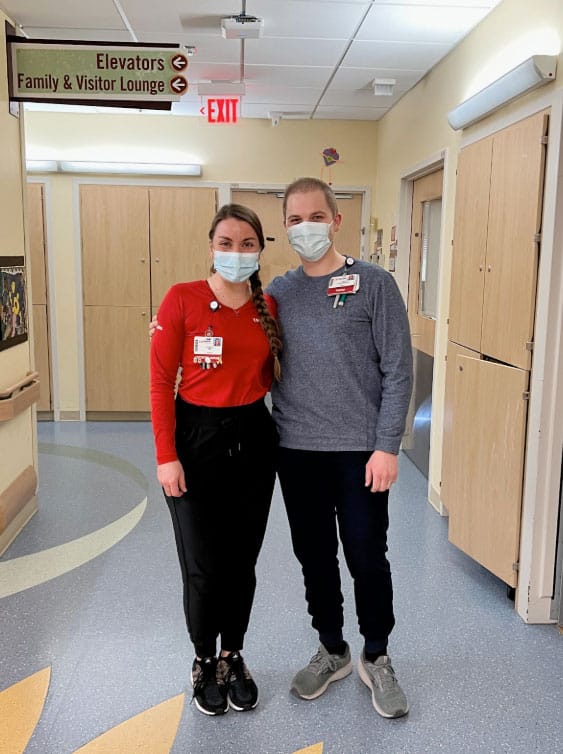

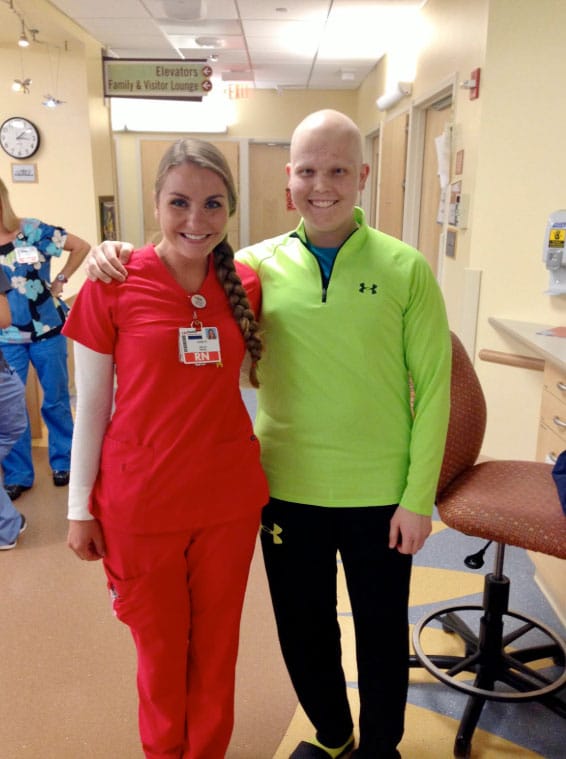
I love cranking up my favorite music and going for long run. The ability to sweat and move is something I don’t take for granted.
Immerman Angles is a great resource for those walking through treatment.
Being kind costs you nothing.
Lose yourself by caring for others. Whether your own family, friends, or even strangers, it’s hard to be depressed when you are actively working to make someone else’s day and life better.
While attending my first year of nursing school, I started to notice an increased discomfort in my right shoulder. I went to my primary care provider who dismissed my shoulder pain as incidental. Regardless of my requests for further scans, I was told it wasn’t broken and if I was truly worried I should follow up with orthopedics. It was five months before I returned for further evaluation.
In 2015 I completed 10 cycles of VDC-IE and 31 rounds of high dose radiation to my entire right shoulder and right lung. In 2016 I underwent an autologous stem cell transplant and then completed a final 10 rounds of radiation to my left lung. My scans have remained stable since 2016 and I have annual surveillance scans for the rest of my life.
My family was my greatest support through my cancer treatment. I met my wife 3 months after finishing treatment when I returned to nursing school, and she has joined me for the highs and lows of relapse scares as well as the difficulties of infertility caused by my treatment.
Survivors guilt has been one of my greatest struggles through and after treatment. Throughout my treatment, I developed many incredible relationships with other patients undergoing treatment at the children’s hospital. In many cases, our trauma bonding knit us together as if we were siblings. As many have passed away, the pain and confusion of my survival has been hard to comprehend. Though treatment was plagued by life threatening and long lasting side effects, the pain of losing someone I loved has proven to be far more difficult .
My relationship with God has been my greatest strength and source of hope through my entire life. It’s so difficult to summarize the intensity of knowing and trusting God, whether the lows of crying on the bathroom floor of a hospital room or the highs of now achieving monumental life goals with my beautiful family.
Cancer completely changed my life. Though there were so many dark and awful moments, there has been beauty that has come from the ashes of suffering. Life is filled with decisions of choosing perspective. Learning the balance of holding both the positive and the negative is important, but there is something life-giving about intentionally choosing to find the good even in the darkest moments.
You only have enough strength for today. So don’t get ahead of today. Take every day one step at a time. Treatment is plagued with “What Ifs”: “What if I don’t respond? What if I can’t control my nausea? What if I relapse?” Only cross the “What If” bridges when you have too. It’s not that you ignore those questions. Some days, it feels like the “What Ifs” are the only thing you can see. But just remember that you may never have to cross some of those “What If” bridges. So try to focus on what is right in front of you- completing today. Lean into those who breathe life into you and protect yourself from unnecessary people who drain you.
I love painting, drawing, and creating art—it helps me express what I’m feeling when words don’t quite work. Journaling is another favorite; it clears my mind and brings me peace. I love how yoga helps me reconnect with my body, and there’s nothing better than a long bubble bath to unwind. Laughing with friends lifts my spirits, and getting out as much as possible reminds me I’m never stuck.
Find the joy.
Even in tough moments, I try to look for small sparks of happiness—whether it’s a laugh with a friend, a quiet moment with a cup of tea, or creating something with my hands. It helps me stay grounded and hopeful.
Pain in my knee, especially at night.
I had the EuroEwing99 protocol, with intensive chemotherapy and a full knee replacement as my limb salvage surgery. My chemotherapy was from April 2005 to February 2006, with my knee replacement in September 2005. I then had several leg lengthening surgeries from the age of 9 to 16 as a result of my knee replacement. I have never had a recurrence or even a scare.
My sister Stephanie, who is two years older than me. We are very close and she is my greatest support.
I have found society’s misunderstanding of cancer remission more challenging than any surgery or physio. Having survived Ewing sarcoma, and lived 20 years after my diagnosis so far, I am very lucky to have a top outcome. This is something I am so grateful for and I have dedicated my life to improving outcomes for Ewing sarcoma patients. However, I have found it challenging to explain how remission actually feels, as a childhood cancer patient. I haven’t lived a day in the last 20 years without the long-term effects of my treatment. I am constantly scared of recurrence, living with the uncertainty of when my next surgery will be, and battling with the psychological effects of having cancer as a child, including becoming permanently disabled when I was 9. These aspects are layered and complicated to explain. I try endlessly to be part of a societal shift in how we speak about remission, to face the reality of all aspects.
I have found strength in my friends, family, and dedication to improving the landscape for the next generation of Ewing sarcoma patients. This hope gives me strength to know that this journey is bigger than just me.
I would like other people to know that living with and beyond cancer will put life into a new perspective. You will find out what is important to you, what gives you hope, and what you are in control of. You will also find out the hard realities, face days you think you won’t be able to move through, and what you can’t control. You will meet the best people, and find out what this life is really all about. And you will have to face it all, the good and the bad, in a way that some people won’t understand. But you can face it. And you can remain you while you do.
To find your pockets of joy. Whether it’s a long hug, your ultimate favourite treat, or a FaceTime which is guaranteed to leave you laughing out loud, there are pockets to be found in every day. All we have is the joy of the moment.
The Bone Cancer Research Trust has great resources and organise virtual and in-person meet ups (in the UK). The Euro-Ewing Consortium is also a great organisation to keep up-to-date with research and clinical updates.

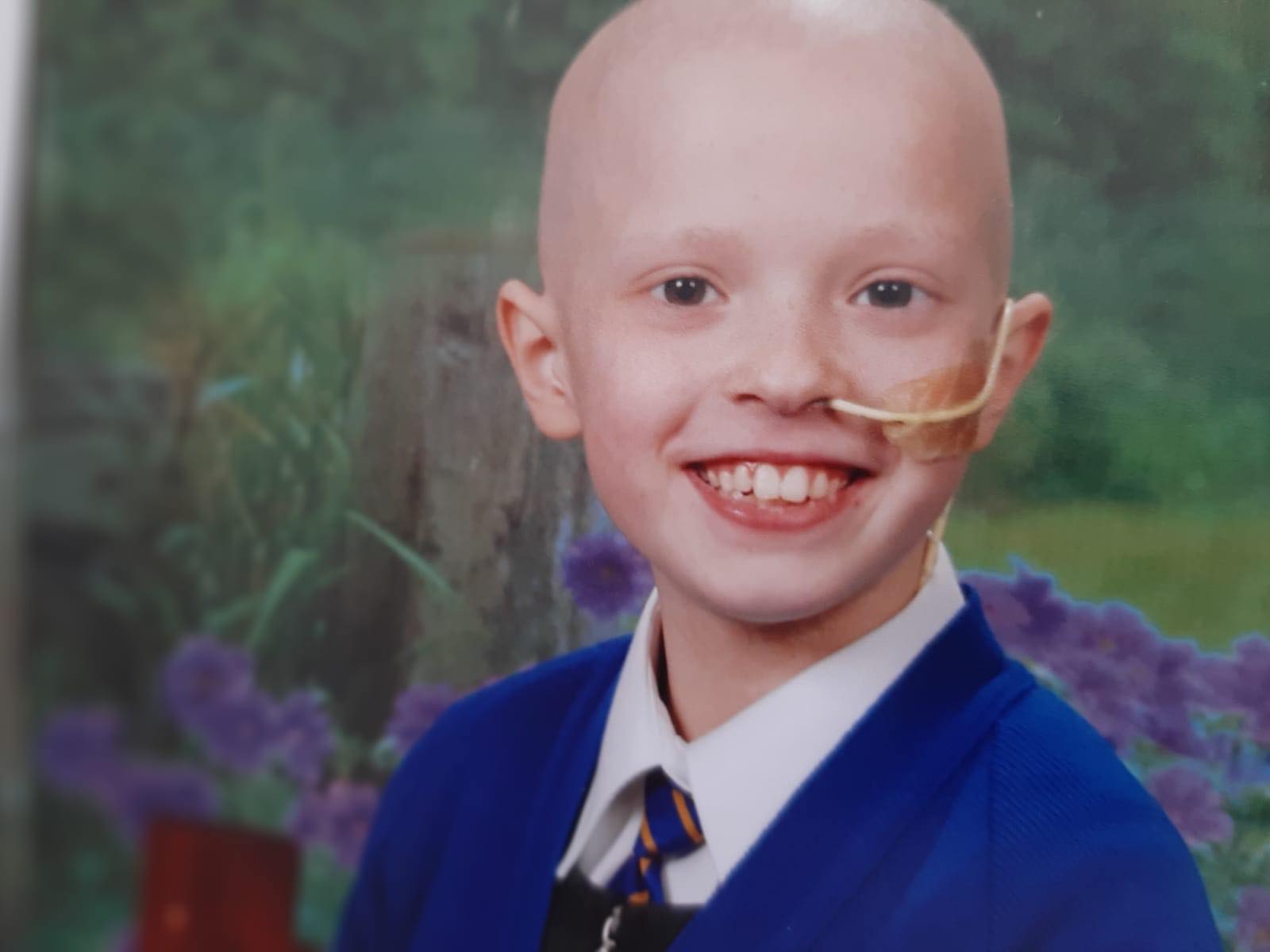
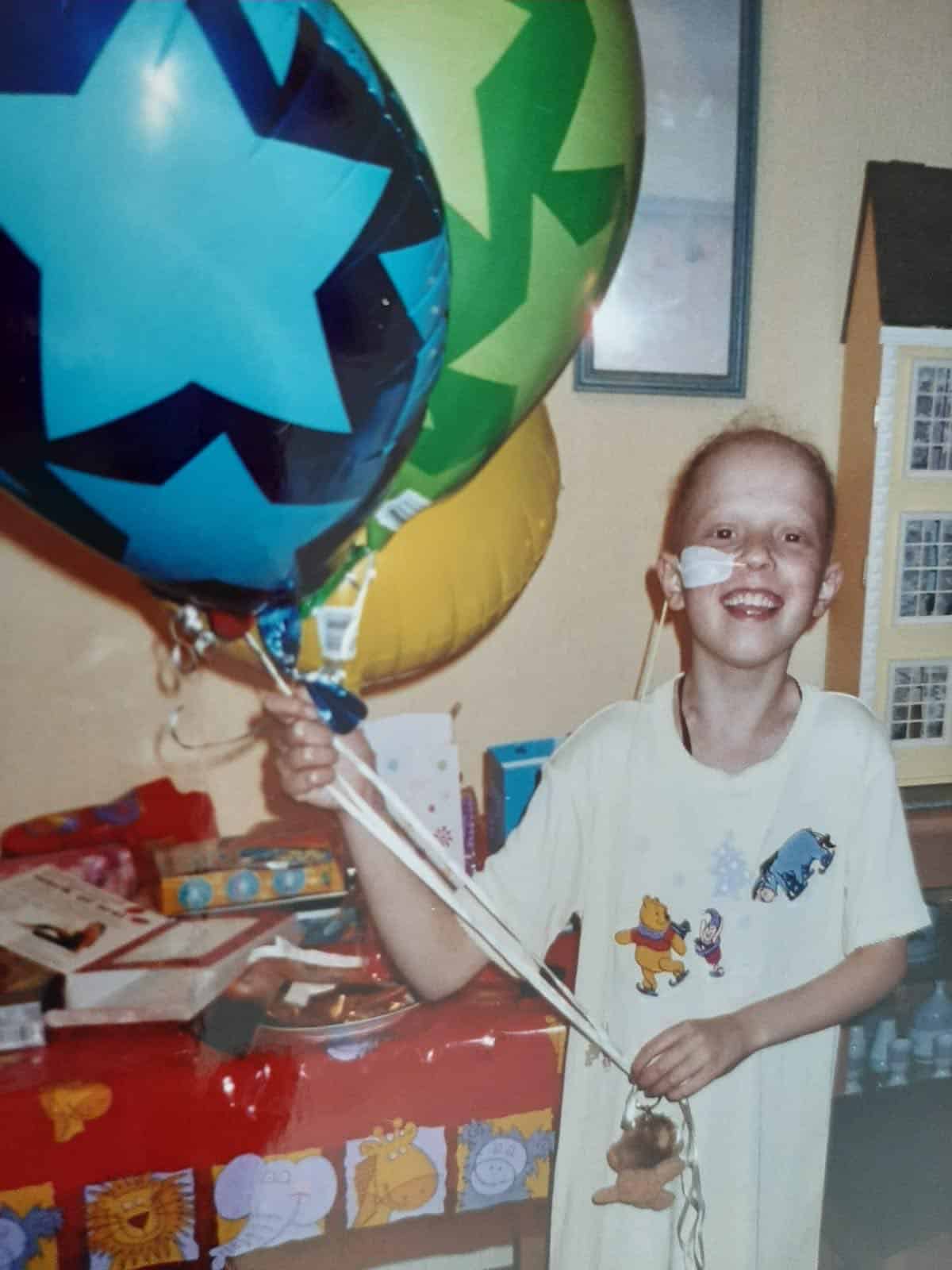
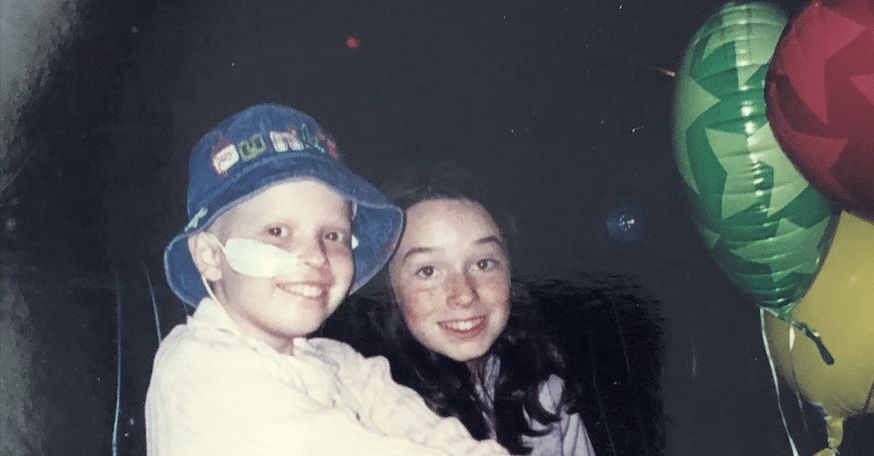
I love painting, drawing, and creating art—it helps me express what I’m feeling when words don’t quite work. Journaling is another favorite; it clears my mind and brings me peace. I love how yoga helps me reconnect with my body, and there’s nothing better than a long bubble bath to unwind. Laughing with friends lifts my spirits, and getting out as much as possible reminds me I’m never stuck.
The Bone Cancer Research Trust have great resources and organise virtual and in-person meet ups (in the UK). The Euro-Ewing Consortium is also a great organisation to keep up-to-date with research and clinical updates.
Find the joy.
Even in tough moments, I try to look for small sparks of happiness—whether it’s a laugh with a friend, a quiet moment with a cup of tea, or creating something with my hands. It helps me stay grounded and hopeful.
Pain in my knee, especially at night.
I had the EuroEwing99 protocol, with intensive chemotherapy and a full knee replacement as my limb salvage surgery. My chemotherapy was from April 2005 to February 2006, with my knee replacement in September 2005. I then had several leg lengthening surgeries from the age of 9 to 16 as a result on my knee replacement. I have never had a recurrence or even a scare.
My sister Stephanie, who is two years older than me. We are very close and she is my greatest support.
I have found society’s misunderstanding of cancer remission more challenging than any surgery or physio. Having survived Ewing sarcoma, and lived 20 years after my diagnosis so far, I am very lucky to have a top outcome. This is something I am so grateful for and I have dedicated my life to improving outcomes for Ewing sarcoma patients. However, I have found it challenging to explain how remission actually feels, as a childhood cancer patient. I haven’t lived a day in the last 20 years without the long-term effects of my treatment. I am constantly scared of recurrence, living with the uncertainty of when my next surgery will be, and battling with the phycological effects of having cancer as a child, including becoming permanently disabled when I was 9. These aspects are layered and complicated to explain. I try endlessly to be part of a societal shift in how we speak about remission, to face the reality of all aspects.
I have found strength in my friends, family, and dedication to improving the landscape for the next generation of Ewing sarcoma patients. This hope gives me strength to know that this journey is bigger than just me.
I would like other people to know that living with and beyond cancer will put life into a new perspective. You will find out what is important to you, what gives you hope, and what you are in control of. You will also find out the hard realities, face days you think you won’t be able to move through, and what you can’t control. You will meet the best people, and find out what this life is really all about. And you will have to face it all, the good and the bad, in a way that some people won’t understand. But you can face it. And you can remain you while you do.
To find your pockets of joy. Whether it’s a long hug, your ultimate favourite treat, or a FaceTime which is guaranteed to leave you laughing out loud, there are pockets to be found in every day. All we have is the joy of the moment.
While I was in treatment, the Beads of Courage program really helped me have hope to continue fighting. Every time I had a procedure, got a shot, or accomplished a milestone, I received a bead. Black beads were for needle “pokes” , white beads were for days of chemotherapy, rainbow beads were for PT/OT visits, etc. My 20 foot long string of beads served as a symbol of hope to me and was a powerful visual reminder of all that I had accomplished. Even now, they still remind me of my determination to persevere.
I’ve also been blessed to work closely with a number of cancer organizations including The National Children’s Cancer Society and 1 Million 4 Anna. They have helped me share my story with others.
My faith and relationship with God has carried me through many hard times in my life and especially throughout my cancer journey. It provided me with hope to keep fighting and peace and comfort that I wasn’t alone in my battle.
I was in the orchestra in middle school and started having a lot of pain in my left arm while holding up my violin. We went to see my pediatrician multiple times and were told it was “growing pains” . Eventually, I developed a painful lump in the center of my upper arm. My mom decided to take me to my old orthopedic doctor who saw me a couple of years before when I broke that same arm. He took an X-ray and found the tumor.
For my recurrence, I was three and a half years cancer free when I started having pain in my right hip. It was painful to walk, especially when I left for college and was walking a lot around a big college campus. I had been to the ER twice to have it looked at and was told my X-rays looked clear of cancer. After a few months, I got an MRI of my femur and hip and my tumor was found. Unlike my original tumor, it hadn’t grown outside of the bone yet, so could only be seen on MRI.
For my first occurrence, I did 11 months of chemotherapy and had a major limb salvaging surgery of my left humerus where they replaced my humerus with my fibula from my leg. My chemotherapy regimen was VDC/IE (vincristine, doxyrubicin, cyclophosphamide, ifosfamide, and etoposide).
For my recurrence, I did 5 months of VIT chemotherapy (vincristine, irinotecan, and temozolomide). I also had a hip replacement surgery of right upper femur.
My family was my biggest support during my treatment. My parents were there with me for every hospital visit and every doctor’s visit. My siblings also were a huge support to me. Even though they were young when I was diagnosed and they didn’t fully understand the extent of my diagnosis, they supported me in the ways they could and brought me a lot of joy.
My community also rallied together to take care of me and my family. Meals were brought over, cards were sent, and friends and extended family watched my siblings when my parents were with me in the hospital. I recall people of all different faith backgrounds in our community praying with their congregations and families on my behalf. It was beautiful to witness, especially as a person of faith myself.
Dealing with the mental and emotional aftermath of having cancer. I was diagnosed with PTSD a couple of years after my recurrence and really struggled with depression and anxiety. I have also struggled immensely with trauma from being told at age 14 that I would not be able to have children due to the chemotherapy. The knowledge that I was most likely infertile, along with failed IVF treatments to bank my eggs at age 16, was very traumatic for me since being a mother was my biggest dream in life.
However, despite all we’d been told about my infertility and lack of hope my husband and I had to conceive children, we now have two miracle babies! They are the biggest blessings of my life. While I am so grateful to recognize the miracles I’ve been given, I still struggle even today with PTSD from both cancer and my infertility diagnosis and the trauma they’ve caused me throughout my life. Therapy has been monumental in helping me come to terms with what happened to me and heal.
It’s okay to not be okay. If you are diagnosed as a teenager or young adult, you are old enough to understand the reality of your situation, and it’s okay to have a hard time with that. It’s okay to be real with your emotions and not just always have to “focus on the bright side”.
After my recurrence, I was in an extremely dark place. I knew my odds were slim and was severely depressed as I prepared myself to die. For support, I didn’t need cheerleaders and people reminding me to count my blessings. What I needed were people to sit with me in my grief and be there as a listening ear. Those people were who I could trust and be vulnerable with. And for me, it helped to let out some of that fear and sadness, because that was my reality.
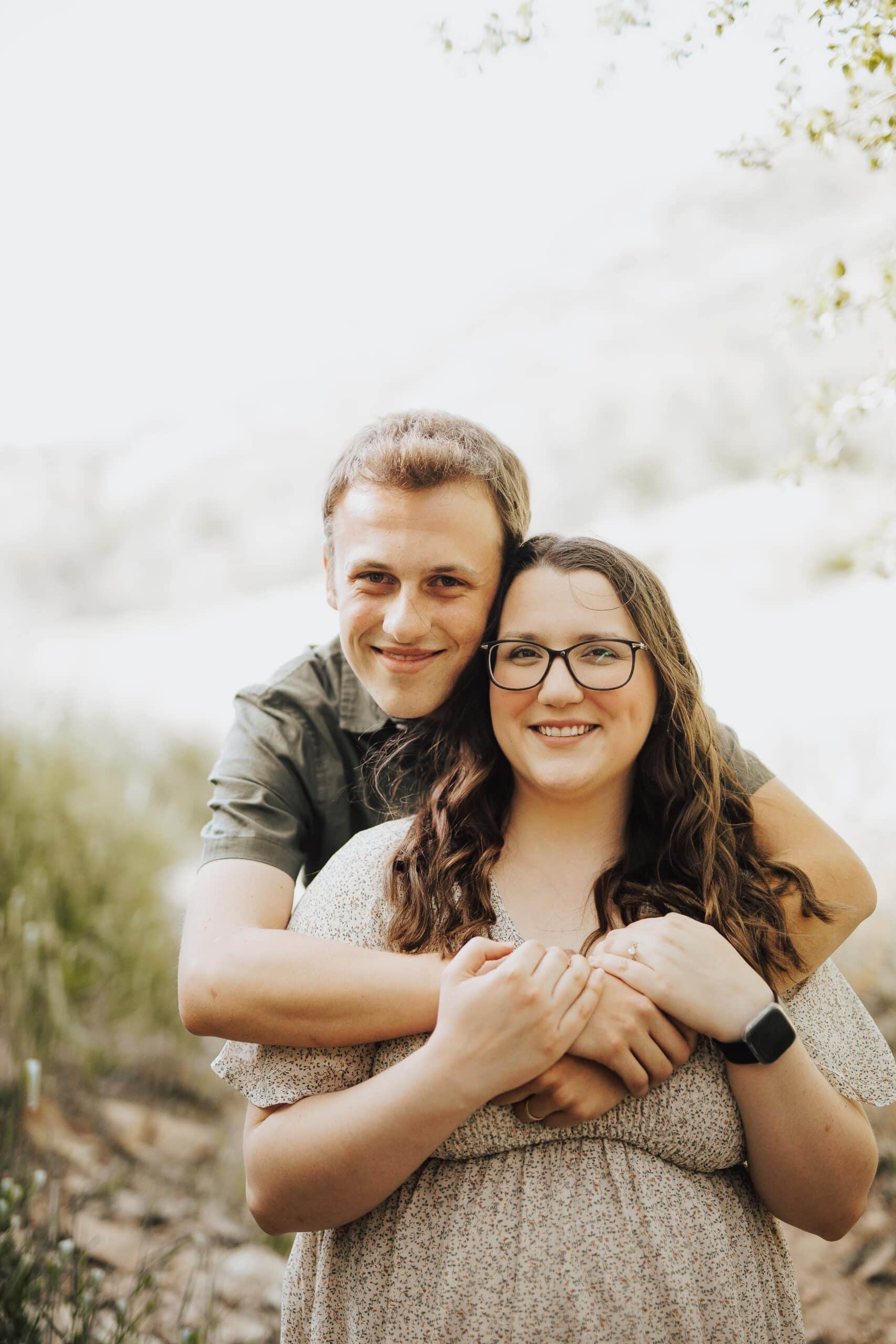
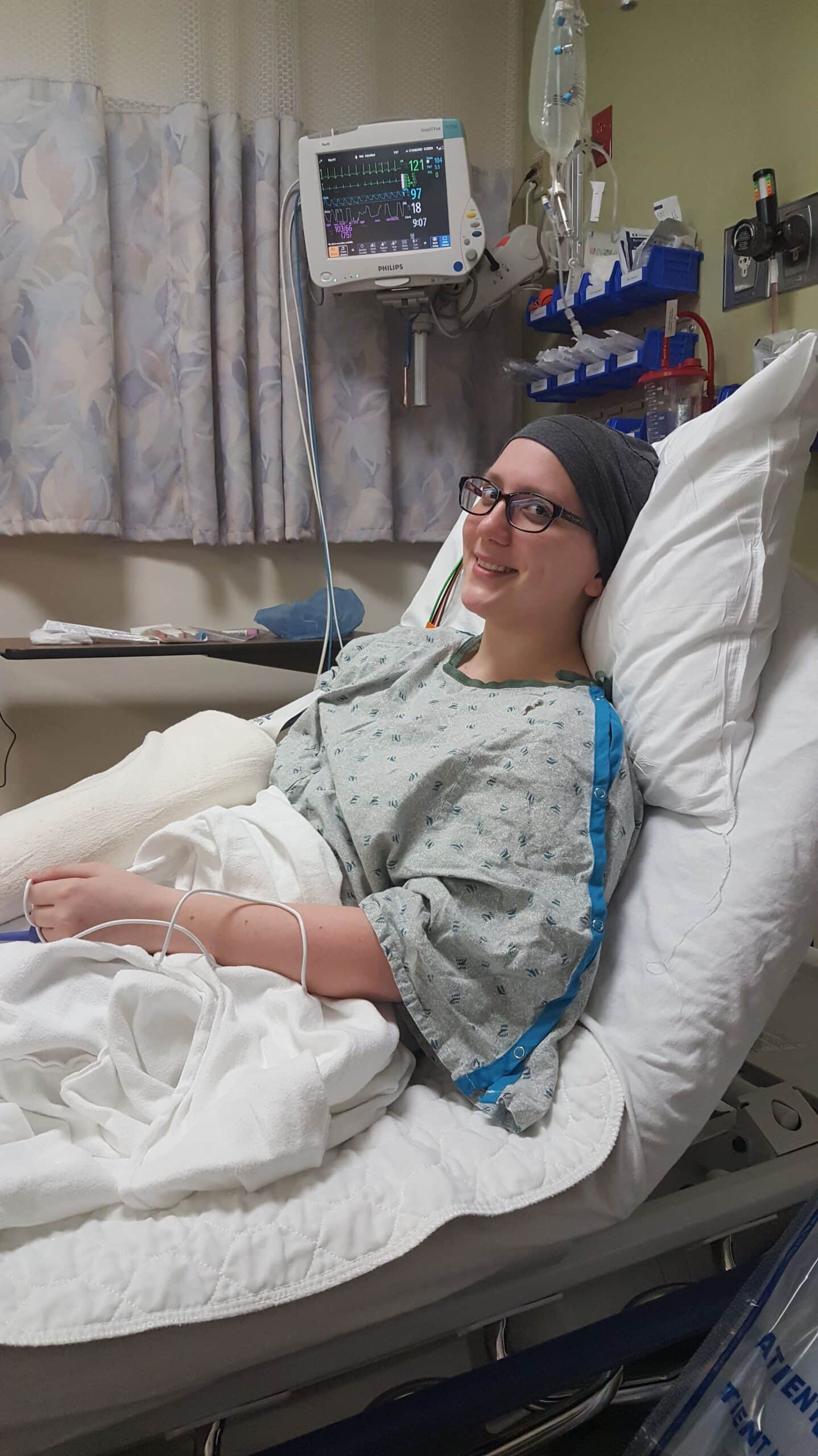

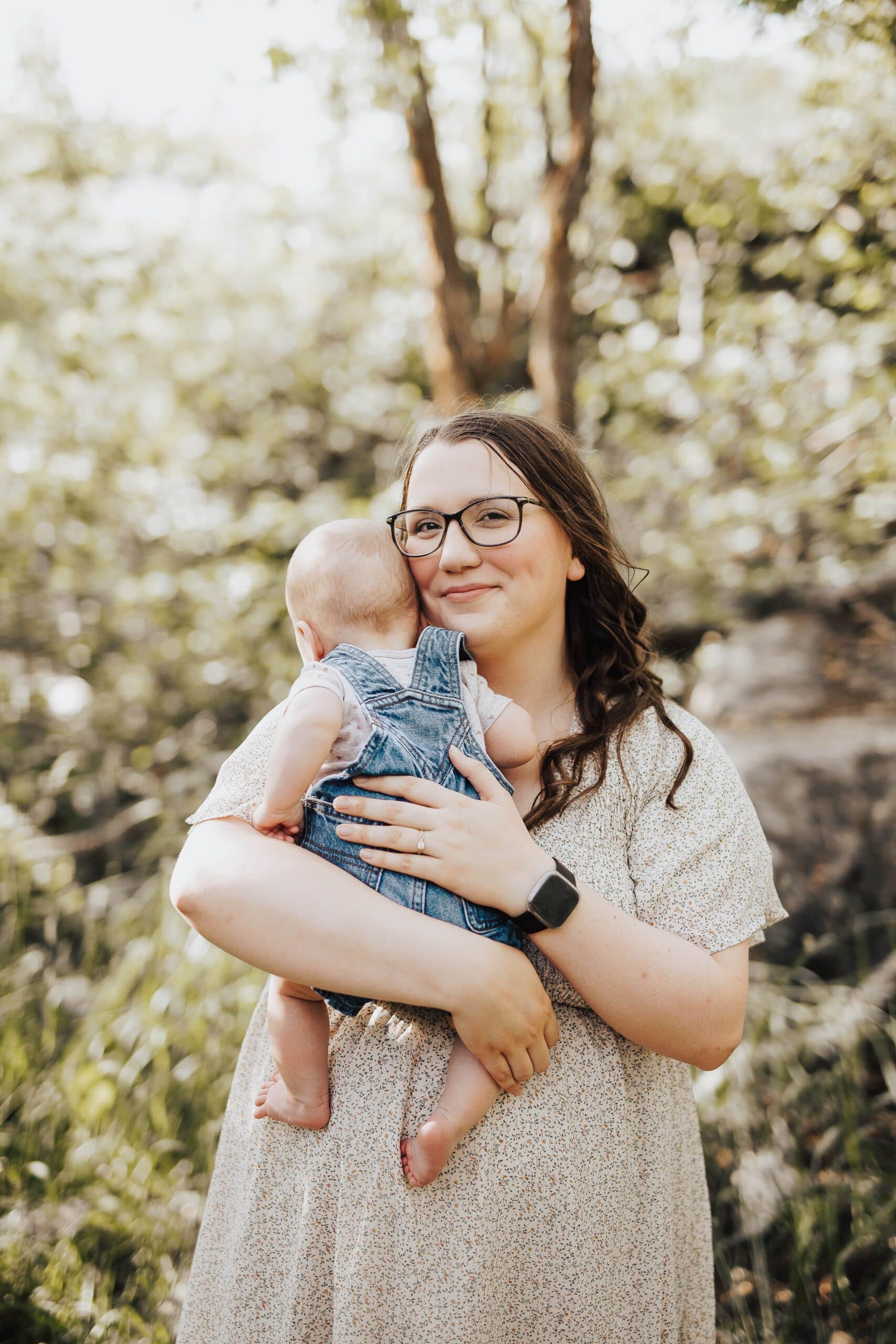
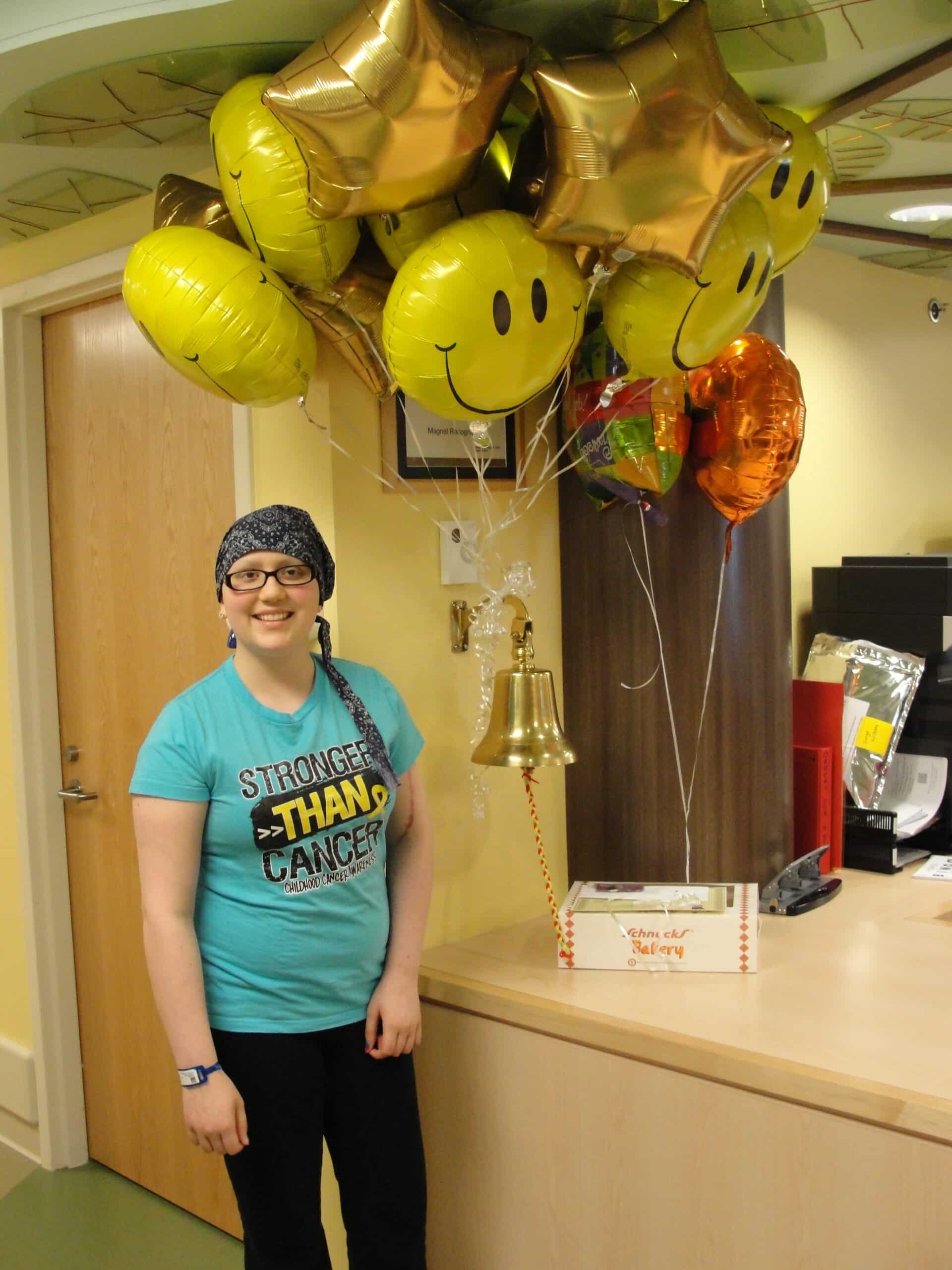
While I was in treatment, the Beads of Courage program really helped me have hope to continue fighting. Every time I had a procedure, got a shot, or accomplished a milestone, I received a bead. Black beads were for needle “pokes” , white beads were for days of chemotherapy, rainbow beads were for PT/OT visits, etc. My 20 foot long string of beads served as a symbol of hope to me and was a powerful visual reminder of all that I had accomplished. Even now, they still remind me of my determination to persevere.
I’ve also been blessed to work closely with a number of cancer organizations including The National Children’s Cancer Society and 1 Million 4 Anna. They have helped me share my story with others.
I was in the orchestra in middle school and started having a lot of pain in my left arm while holding up my violin. We went to see my pediatrician multiple times and were told it was “growing pains” . Eventually, I developed a painful lump in the center of my upper arm. My mom decided to take me to my old orthopedic doctor who saw me a couple of years before when I broke that same arm. He took an X-ray and found the tumor.
For my recurrence, I was three and a half years cancer free when I started having pain in my right hip. It was painful to walk, especially when I left for college and was walking a lot around a big college campus. I had been to the ER twice to have it looked at and was told my X-rays looked clear of cancer. After a few months, I got an MRI of my femur and hip and my tumor was found. Unlike my original tumor, it hadn’t grown outside of the bone yet, so could only be seen on MRI.
For my first occurrence, I did 11 months of chemotherapy and had a major limb salvaging surgery of my left humerus where they replaced my humerus with my fibula from my leg. My chemotherapy regimen was VDC/IE (vincristine, doxyrubicin, cyclophosphamide, ifosfamide, and etoposide).
For my recurrence, I did 5 months of VIT chemotherapy (vincristine, irinotecan, and temozolomide). I also had a hip replacement surgery of right upper femur.
My family was my biggest support during my treatment. My parents were there with me for every hospital visit and every doctor’s visit. My siblings also were a huge support to me. Even though they were young when I was diagnosed and they didn’t fully understand the extent of my diagnosis, they supported me in the ways they could and brought me a lot of joy.
My community also rallied together to take care of me and my family. Meals were brought over, cards were sent, and friends and extended family watched my siblings when my parents were with me in the hospital. I recall people of all different faith backgrounds in our community praying with their congregations and families on my behalf. It was beautiful to witness, especially as a person of faith myself.
Dealing with the mental and emotional aftermath of having cancer. I was diagnosed with PTSD a couple of years after my recurrence and really struggled with depression and anxiety. I have also struggled immensely with trauma from being told at age 14 that I would not be able to have children due to the chemotherapy. The knowledge that I was most likely infertile, along with failed IVF treatments to bank my eggs at age 16, was very traumatic for me since being a mother was my biggest dream in life.
However, despite all we’d been told about my infertility and lack of hope my husband and I had to conceive children, we now have two miracle babies! They are the biggest blessings of my life. While I am so grateful to recognize the miracles I’ve been given, I still struggle even today with PTSD from both cancer and my infertility diagnosis and the trauma they’ve caused me throughout my life. Therapy has been monumental in helping me come to terms with what happened to me and heal.
My faith and relationship with God has carried me through many hard times in my life and especially throughout my cancer journey. It provided me with hope to keep fighting and peace and comfort that I wasn’t alone in my battle.
It’s okay to not be okay. If you are diagnosed as a teenager or young adult, you are old enough to understand the reality of your situation, and it’s okay to have a hard time with that. It’s okay to be real with your emotions and not just always have to “focus on the bright side”.
After my recurrence, I was in an extremely dark place. I knew my odds were slim and was severely depressed as I prepared myself to die. For support, I didn’t need cheerleaders and people reminding me to count my blessings. What I needed were people to sit with me in my grief and be there as a listening ear. Those people were who I could trust and be vulnerable with. And for me, it helped to let out some of that fear and sadness, because that was my reality.
"*" indicates required fields
Sign up today to receive regular updates, guides, patient stories, and support from ESI.
"*" indicates required fields

Lorem ipsum dolor sit amet, consectetur adipiscing elit. Ut elit tellus, luctus nec ullamcorper mattis, pulvinar dapibus leo.